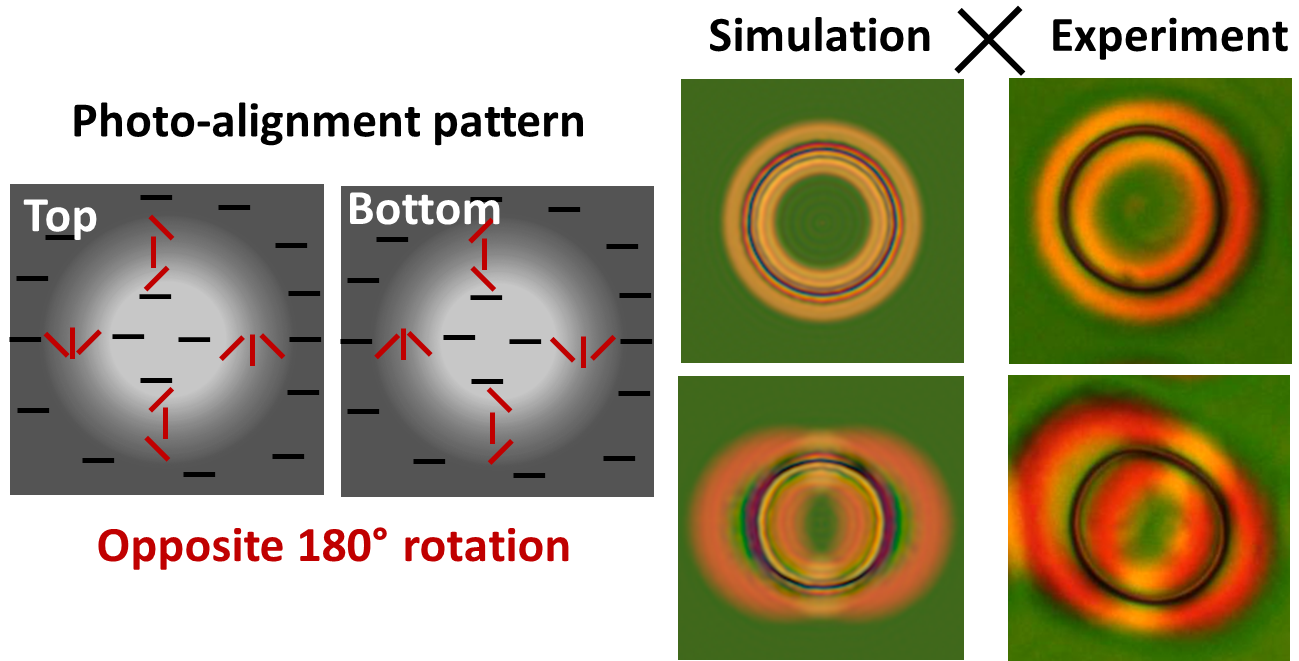Photo-alignment is a versatile tool to pattern the alignment at the confining substrates in a liquid crystal (LC) cell. Arbitrary alignment patterns can be created by using projection with a spatial light modulator (SLM) for the illumination. We demonstrate that a careful design of the alignment patterns allows the stabilization of topological solitons in nematic liquid crystal (NLC) cells, without the need for chirality or strong confinement. The created LC configurations are stabilized by the anchoring conditions imposed at the substrates. The photo-aligned background at both substrates is uniformly planar aligned, and ring-shaped regions with a 180° azimuthal rotation are patterned with an opposite sense of rotation at the top and bottom substrate. A disclination-free structure containing a closed ring of vertically oriented directors is formed when the patterned rings at the top and bottom substrate overlap. Thanks to the topological stability, a vertical director orientation in the bulk is observed even when the centra of both patterned rings are shifted over relatively large distances. The combination of numerical simulations with experimental measurements allows identification of the 3D director configuration in the bulk. A finite element (FE) Q-tensor simulation model is applied to find the equilibrium director configuration and optical simulations are used to confirm the correspondence with experimental microscopy measurements. The created LC configurations offer opportunities in the field of optical devices, light guiding and switching, particle trapping and studies of topological LC structures.
Download a copy of the manuscript

